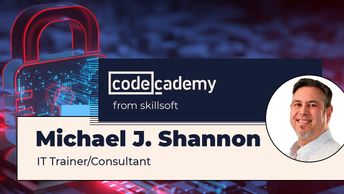IT Skills Security Security Accreditations and Best Practice Systems Security Certified Practitioner 2021
To secure systems and applications appropriately, security practitioners must first recognize the various types of malicious code and activity. After this, they need to execute the best measures to counter these exploits. Use this theory-based course to recognize multiple types of exploits and malware and their most common countermeasures.
Explore malware variants, such as rootkits, spyware, scareware, and ransomware. Examine countermeasures involving scanners, antimalware, and code signing. Then, study malicious activities, such as insider threats, data theft, zero-day exploits, and advanced persistent threats (APTs). And discover their various countermeasures, such as system hardening, patching, and data loss prevention (DLP). Lastly, investigate advanced mitigation techniques that involve behavioral and data analytics, machine learning, and artificial intelligence.
Upon completion, you'll be able to identify and analyze malicious code and activity. You'll also be further prepared for the (ISC)² Systems Security Certified Practitioner (SSCP) 2021 exam.
Explore malware variants, such as rootkits, spyware, scareware, and ransomware. Examine countermeasures involving scanners, antimalware, and code signing. Then, study malicious activities, such as insider threats, data theft, zero-day exploits, and advanced persistent threats (APTs). And discover their various countermeasures, such as system hardening, patching, and data loss prevention (DLP). Lastly, investigate advanced mitigation techniques that involve behavioral and data analytics, machine learning, and artificial intelligence.
Upon completion, you'll be able to identify and analyze malicious code and activity. You'll also be further prepared for the (ISC)² Systems Security Certified Practitioner (SSCP) 2021 exam.
| Objectives |
|---|
SSCP 2021: Malware & Countermeasures
|


